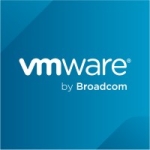Currently, we are using Netezza to the utmost. We first used it for our data warehouse. Then we moved on to doing analytics. Also, we are now doing some packages on it. Currently we are using it for multiple purposes, but, mostly it's used for reporting.
It is a back end for our SSIS, MicroStrategy,, Tableau. All of these are connecting to get the data. To do so we are also using our analytics which is built on the data.
I'm working for a retail client. We have a lot of reports, which are for store managers. The store managers used to get all the reports using the SSIS package, which was built upon our back end and they would have a lot of performance issues. When I say performance issues, in the morning when there are almost 2,000 users trying to connect to the same report, there were a lot of problems because it was a relational database. People were trying to get information out of it and it would break the flow, actually bottleneck the flow. That's why they were getting the impact.
What we did is, we did a PoC and found this client is well built. Because of that, we were able to create a separate layer for reporting. There was a simple requirement for the DBA, where we don't need to build an index or anything like that. Those reports were improved from a couple of hours to minutes. That was the biggest benefit we've had from this appliance.
For me, mainly, it reduces my costs. It's not only the appliance cost. There are also support costs and a maintenance costs. It does reduce the costs very drastically.
Administration of this product is too tough. It's very complex because of the tools which it's missing. We would require better tools for doing administration. For example, if I need to get a permission of a user on a particular object, it is so complex. It's not straightforward. It would not give me a display of that particular element. Basically auditing is tough to do on it. If I don't have a graphical tool, the auditor will ask me thousands of questions.
Stability, no. In production, no. But when we are migrating or we are moving out from one platform to another... but I guess that doesn't count.
It is scalable to multiples of itself. If currently it is 1X, I can go to 3X, 4X, 5X. I cannot go 1.2, 1.5, 1.8. I have to go 1X, 2X, 3X, a whole interval. That is the only catch, otherwise yes, it is scalable.
We were using a different product. We switched it because of the cost of maintenance. We wanted to reduce the cost of maintenance and it helped to drastically reduce it by some 40 to 50%.
I'm not sure what to compare it to. I am a DBA. For me to set it up, it would be a fast setup. If I'm not a DBA, then it would totally take a little bit of time. For someone who is new to Netezza, it's not complex but it requires prerequisite knowledge. That's it.
I would rate the setup as medium complexity, given that we have somebody who knows a little bit of database administration. I would not say the full administration. I would rate setup around two and a half out of five.
We did. We were actually looking at Teradata and Exadata and we chose Netezza.
The first thing is, do a full PoC where you actually plug in dummy data. Start with millions of records and try out the options which you have already in your environment and see if you really get a benefit in terms of performance. Because this product is mainly to improve the performance.
There are two things. First, it improves the performance and then it's easy to maintain. When I say easy, you would not need a DBA at all. Anybody who has really good knowledge in SQL should be able to maintain this product. That cost, of a DBA, you will completely be eliminating.
The first part of this product is basically performance. If you are moving on from an ODBC database to this, then you would need to do a round of testing on data because you are actually moving from a different technology, that is, to an appliance technology. There are multiple things which can stop you, things you might not be able to do; operations, like booking of a ticket or reloading a feed. We tried to do those things here, in Oracle or MySQL, but when it comes to reporting, this is the best solution we have so far. By that I mean, cheapest and the best.
Then, try to figure out if you really require a code change, because there is a minimal time for a code change; but if it's a request then you should catch it when you're doing a PoC.
Take out any complex situation, give it to the vendor, IBM. Tell them to do a small PoC on the dummy data and let them come up with the performance, then you can compare with your feeds.
Overall, it has good connectivity with almost all the niche technologies we have on the market right now. It can scale up to any technology, any content. That is another benefit of having this.
IBM is a good company which always tries to be competitive with other technologies on the market. If we are stuck, we are trying to purchase something for our content and we are stuck somewhere, something is missing, we approach them and these guys will give us the solution in terms of a patch or an API or something like that, which will help us connect to the newest technologies.
















I have worked for almost 9+ yrs of experiences in Neetzza Appliance. I can say it's new appliance MAKO is more stable and performance is really fantastic. One my my customer used for their EDW space and really awesome. I even know Teradata but if i compare then It's beating very badly